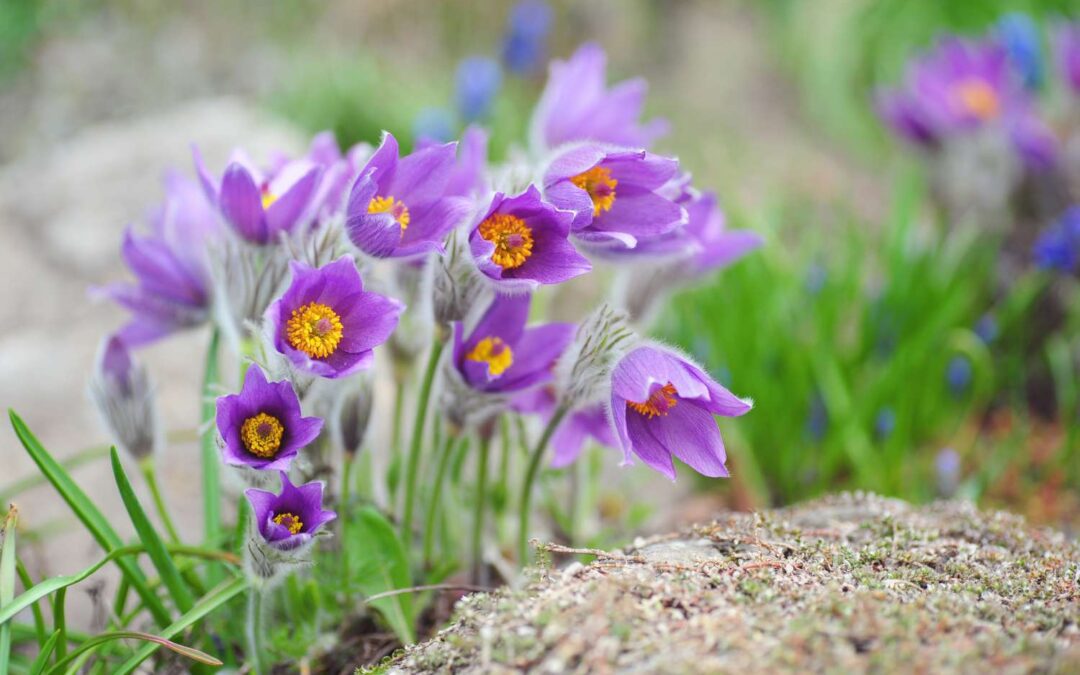April’s crazy temperature swings have had gardeners racing from the urge to get tomatoes in the ground to scrambling to dig up floating row covers from the back of the garage. I don’t believe that there is any group of folks more obsessed with the weather than gardeners. Including meteorologists! I personally have 8 weather apps on my phone. And another 3 different ones on my tablet!
Many gardeners use Mother’s Day weekend as permission from Mother Nature to plant all of their tender annuals and vegetables. And even though the Celebration of all things Mom is on track this year, keep your ears tuned to your favorite forecaster. Cool weather flowers like pansies, snapdragons and osteospermum will weather temps close to 30 with a light cover, as will members of the cabbage family. But if you succumbed to temptation and purchased some begonias or geraniums, all bets are off. Night temperatures below 45 degrees means bringing pots in close to the house and covering tender bedding plants like coleus, fuchsia and sweet potato vine, and warm weather veggies like tomatoes, peppers and basil. If those temps fall below 40, bring those same plants into the house or garage.
Luckily there isn’t much to do with your perennials other than to sit back and watch them grow. Planting and transplanting most of them shouldn’t be a problem by the end of the week. Night temperatures appear to be moderating and last week’s storms brought some much appreciated moisture to the soil. But remember to avoid dividing your plants while they are flowering.
Many gardeners find it tricky to predict which pests will be having banner year. But you can always count on slugs and earwigs. Hosta are a favorite and they’ll munch big holes in those luscious leaves overnight. There are tons of remedies for slugs, including the ever-popular stale beer trap, as well as products like Sluggo Plus or Bug-Geta. Both are available in the Garden Center.
It’s also getting close to the time that we see Zimmerman Pine Sawfly larvae feeding on mugo pines. They’ll strip last year’s needles to the stem, seemingly overnight. As they don’t consume the new growth, your plants will be fine long term, but they look really silly. Watch for the pink saucer magnolias to begin flowering, then treat the larvae with Eight, or for an organic option, try Captain Jacks.
No matter the weather, one insect population or another is guaranteed to get out of hand. Soft-bodied bugs like aphids and lacewings are often washed off plants by a good, strong thunderstorm. It’s too soon to tell if there will be significant problems, but it doesn’t hurt to keep your eyes open. Watch your indicator plants. Roses, linden trees and hibiscus for instance, are all favorites of Japanese beetles. When you spot the pests, you can treat more broadly. Ornamental trees and shrubs can be dosed with a systemic product.
Trees and shrubs that bear any kind of fruit should be treated differently. You don’t want any pesticides accumulating in the fruit. Keep systemic products away from dogwood, crabapple, viburnum and serviceberry, as well as the plants we consider fruit-bearing for ourselves.
And find some space in your garden for butterfly-attracting plants. The swallowtails love bronze fennel. There are lots of general butterfly magnets like liatris and coneflowers. Butterflybush should emerge soon from winter dormancy. They are famous for their fragrant, non-stop flower power. Grow them as tender perennials or pot them in containers as spectacular annuals.
Let’s close with a few words about watering. We aren’t usually troubled by dry weather until late June or early July, but it wouldn’t hurt to be extra vigilant. Newly planted trees and shrubs require about one inch of water a week to ensure establishment. This is a practice that you will need to monitor until the ground freezes in November. Nobody enjoys watching a plant die from neglect.

